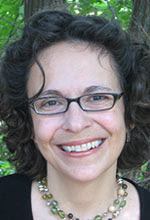by Rudy Lopez, Ashley Reich, and Kara Oppermann
Abraham Maslow, an American psychologist, is known as the Father of Humanistic Psychology. He introduced this theory in his 1943 paper, "A Theory of Human Motivation." By observing people’s instinctive curiosity, he was able to understand what stimulates human motivation. He found that people tend to fulfill their fundamental needs before moving on to meet their other ‘secondary’ needs.
Maslow developed a pyramid consisting of 5 human needs organized from bottom to top, starting with the most basic of needs and ending with more complex needs. The bottom needs are considered more important than the needs near the top. The five needs are (in order of importance): Physiological, Safety, Social, Esteem, and Self-actualization needs.
Physiological needs are needs that are crucial for survival. These needs are basic and vital to the survival of any species. Eating, sleeping, breathing and biological needs fit into category. The first interview included a Texas State student who satisfies his physiological need by purchasing various food and beverage products at H-E-B. He started by explaining why he bought groceries (because he was hungry), and stated that if he didn’t buy groceries he would literally die.
Safety needs are needs that we must have in order to be protected from harm and dangerous elements.
Social needs are needs that we fulfill by surrounding ourselves with company that makes us feel accepted. We all want to feel needed and loved, and establish companionships with others. In one of the interviews conducted, the interviewee stated that she regularly pays dues to be a member of an on-campus business organization because it meets not only her social needs, but her esteem needs as well.
Esteem needs deal with one’s need to have stable self-esteem, self-respect and to be accepted/respected by others. They fulfill a person’s need to gain recognition and belong to activities that give one a sense of contribution and self-value. When esteem needs are not met, symptoms of depression can result.
Self-actualization needs are “man’s desire for fulfillment; to become everything that one is capable of becoming.” More so, it is the need for personal and psychological development, and self-awareness; this process of becoming self-actualized allows one to realize their maximum potential. Choosing a specific brand of clothing, audio/stereo equipment, books/magazines/newsletters, toys/games, movies, music, and sporting goods is a way of self-actualizing. Moments of self-actualization are also known as “peak experiences.” This means you are in perfect, blissful harmony, and you understand the meaning of your existence.
When analyzing the business applications of Maslow’s Hierarchy of Needs, it became apparent that the theory is used by marketers in order to grasp some understanding of what motivates consumers to make purchasing decisions and to take action. Advertisers and marketers gather and use data on consumers’ needs to help them define their strategies and actions used in the market. Marketers have a better chance of targeting consumers to purchase their products above others by creating products/advertisements that suit/fit consumer needs more effectively than that of the competitors.
Team Hierarchy of Needs

Kara Oppermann, Rudy Lopez, Ashley Reich


No comments:
Post a Comment